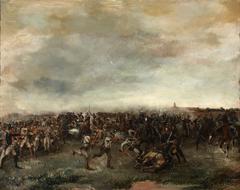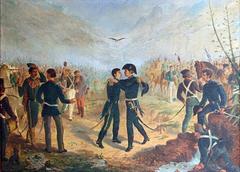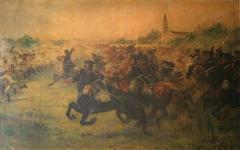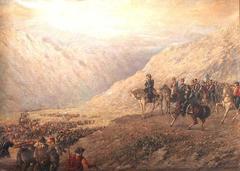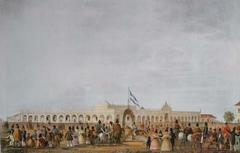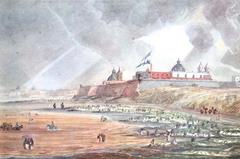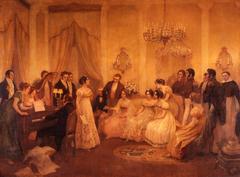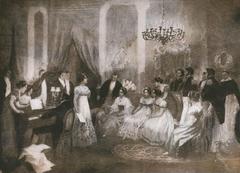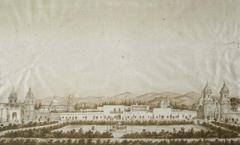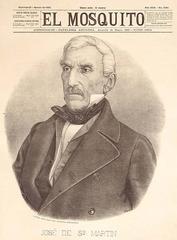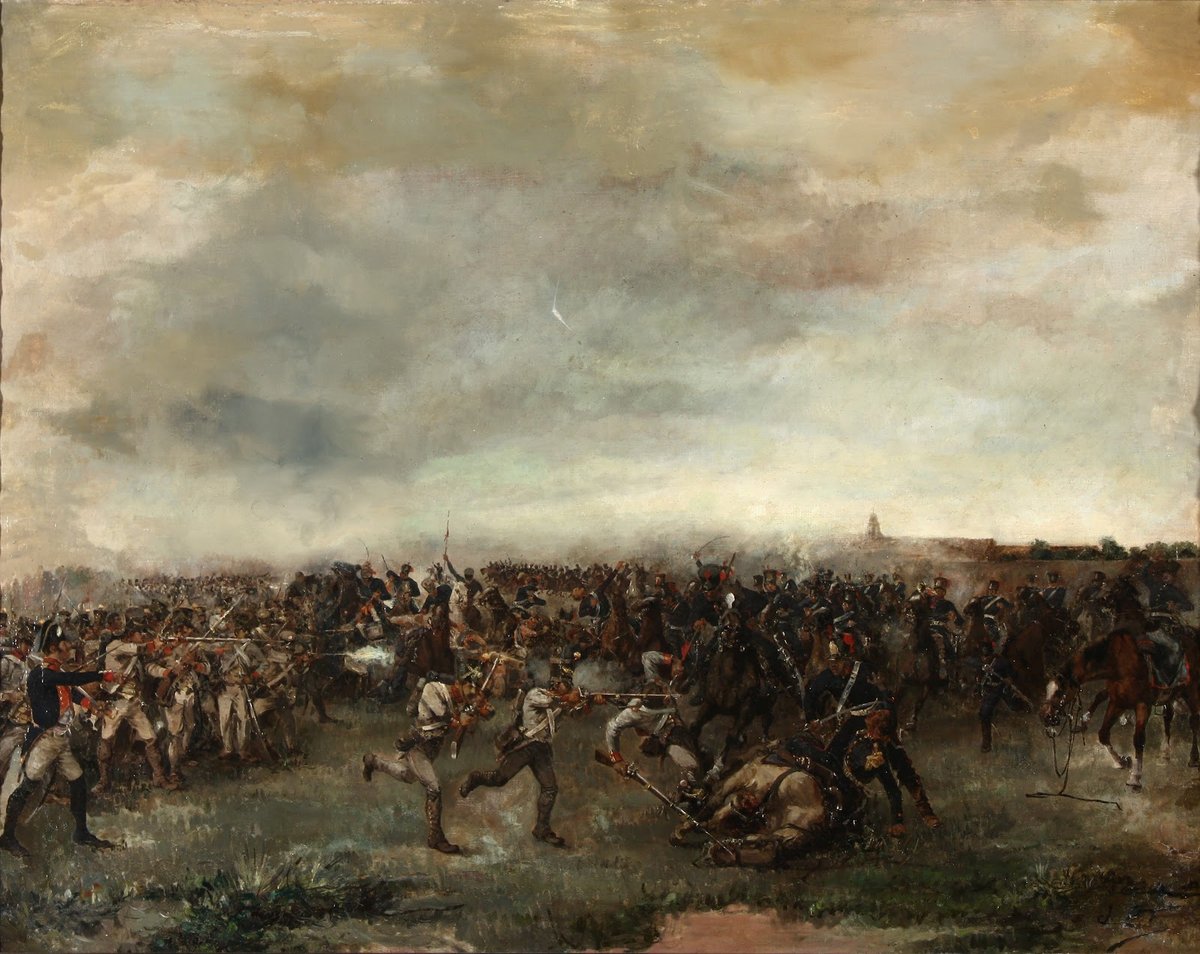
San Martín National Institute Buenos Aires: Visiting Hours, Tickets, and Historical Guide
Date: 14/06/2025
Introduction
The San Martín National Institute (Instituto Nacional Sanmartiniano) is one of Buenos Aires’ most important historical and cultural sites, dedicated to the life and legacy of General José de San Martín—the revered Liberator of Argentina, Chile, and Peru. This comprehensive guide explores the Institute’s historical and cultural significance, provides accurate and current information on visiting hours and tickets, highlights key exhibits, and offers practical tips for an enriching visit. Whether you’re a history enthusiast, student, or traveler, this article will help you plan and make the most of your experience at this iconic Buenos Aires destination (Instituto Nacional Sanmartiniano; San Martín Biography; Buenos Aires Historical Sites).
Contents
- Introduction
- History and Foundation
- The Institute’s Role in National Memory and Identity
- Museum Layout and Collections
- Visiting Information (Hours, Tickets, Accessibility)
- Guided Tours and Educational Programs
- Location and How to Get There
- Travel Tips and Nearby Attractions
- Visitor FAQs
- Conclusion and Call to Action
History and Foundation
The San Martín National Institute was established in 1933 to safeguard and promote the legacy of General José de San Martín, a central figure in South America’s struggle for independence (dbpedia.org). The Institute’s building in Palermo, Buenos Aires, is a faithful reproduction of San Martín’s house in Le Grand-Bourg, France, where he lived in exile from 1834 to 1848 (Wikipedia). Through research, preservation, and public events, the Institute nurtures Argentine identity and commemorates the ideals of liberty and unity exemplified by San Martín’s life (Lynch, 2001).
The Institute’s Role in National Memory and Identity
Beyond a museum, the Institute is a living memorial and educational center. It curates artifacts and documents, hosts exhibitions and lectures, and organizes commemorative events such as the bicentenary of the Battles of Junín and Ayacucho. Its work sustains national holidays like San Martín’s Day (third Monday in August), fostering civic values and a sense of unity among Argentines (officeholidays.com).
Museum Layout and Collections
The Institute’s interior is designed to evoke San Martín’s provincial French home, immersing visitors in the era and life of the Liberator. Notable exhibits include:
- Personal Effects: Uniforms, swords, and personal belongings of San Martín
- Historical Documents: Original letters, military orders, and diplomatic papers
- Artifacts: Maps, medals, and period weaponry from the wars of independence
- Portraiture: Artworks and sculptures depicting San Martín and key historical moments
While exhibits are primarily in Spanish, the museum’s visual displays and knowledgeable staff offer valuable context. The Institute also maintains archives for academic research and hosts public seminars and workshops (whichmuseum.com).
Visiting Information
Location
- Address: Mariscal Ramón Castilla 2752, Palermo, Buenos Aires (whichmuseum.com)
- Neighborhood: Palermo, known for parks, museums, and easy public transport access
Visiting Hours
- Tuesday to Sunday: 10:00 AM – 6:00 PM
- Closed on Mondays and national holidays
- Please verify hours for special events or holidays (Buenos Aires Tourism)
Tickets
- Admission: Generally free; some special exhibits may require a nominal fee
- Booking: Walk-ins welcome; advance booking recommended for group or guided tours
Accessibility
- Wheelchair Access: Ramps and elevators provided, but contact ahead for specific mobility needs as the building is historic
- Restrooms and Facilities: Available, though detailed accessibility information should be confirmed in advance (journeyable.org)
Guided Tours and Educational Programs
- Languages: Guided tours available in Spanish and sometimes English; check availability and book in advance
- Educational Programs: Workshops, lectures, and interactive sessions for schools and groups
- Staff Support: Museum staff are knowledgeable and often provide informal guidance, especially for history enthusiasts (whichmuseum.com)
Location and How to Get There
- Subway (Subte): Line D to “Palermo” or “Ministro Carranza,” then a 15–20 minute walk or short bus/taxi ride (solsalute.com)
- Bus: Several colectivos serve Palermo; use a SUBE card for fares
- Taxi/Rideshare: Cabify and Uber are widely available and affordable
- On Foot/Bicycle: Palermo is pedestrian-friendly, and there are city bike lanes
Travel Tips and Nearby Attractions
- Best Time to Visit: Spring (Sept–Nov) or Fall (Mar–May) for mild weather and local festivals; weekdays are quieter
- Nearby Attractions:
- Parque Tres de Febrero: Rose gardens and lakes
- MALBA Museum: Contemporary Latin American art
- Japanese Garden: Tranquil green space
- Plaza General San Martín and the Metropolitan Cathedral, where San Martín’s remains rest (introducingbuenosaires.com; facts.net)
- Dining: Palermo offers a wide range of cafés and restaurants (Vamos Spanish)
- Language Preparation: Most signage is in Spanish; translation apps or bilingual guides are helpful
Visitor FAQs
What are the San Martín National Institute visiting hours?
Tuesday–Sunday, 10:00 AM–6:00 PM. Closed Mondays and national holidays.
Is there an admission fee?
Admission is generally free, but confirm for special events.
Are exhibits available in English?
Most displays are in Spanish; limited English translations may be available.
Is the Institute wheelchair accessible?
Partially accessible; contact ahead for detailed assistance.
Can I take photos inside?
Photography is permitted without flash or tripods; confirm with staff on arrival.
How do I get there by public transport?
Nearest Subte stations: “Palermo” or “Ministro Carranza” (Line D). Multiple bus lines also serve the area.
Are guided tours available?
Yes, in Spanish and sometimes English; advance booking recommended.
Conclusion
A visit to the San Martín National Institute provides a profound journey into Argentina’s independence history and national identity. The museum’s authentic setting, rich collections, and expert staff make it an essential destination for understanding the ideals of liberty, justice, and unity that shaped modern Argentina. Combine your visit with Palermo’s other attractions for a full cultural experience.
Plan your visit today and deepen your appreciation of Argentina’s heritage!
Call to Action
For the latest updates, travel tips, and real-time visitor information, download the Audiala app. Explore related articles on Buenos Aires’ historical sites and follow us on social media for news and events at the San Martín National Institute. Your journey into Argentina’s rich history begins here!
References
- San Martín National Institute, DBpedia
- Biography of José de San Martín, San Martín UK
- St Martin’s Day in Argentina, Office Holidays
- Argentina and the Legacy of José de San Martín, Lynch, 2001, SAS Space
- San Martín National Institute, WhichMuseum.com
- Buenos Aires Tourism, Official Tourism Website
- Plaza General San Martín, Introducing Buenos Aires
- Buenos Aires City Facts, Facts.net
- Your Guide to Buenos Aires: Travel Tips, Vamos Spanish
- Accessible Travel Buenos Aires, Journeyable
- Sol Salute, Buenos Aires Travel
- Secrets of Buenos Aires, Travel Checklist
- Weather25, Buenos Aires Weather in June
